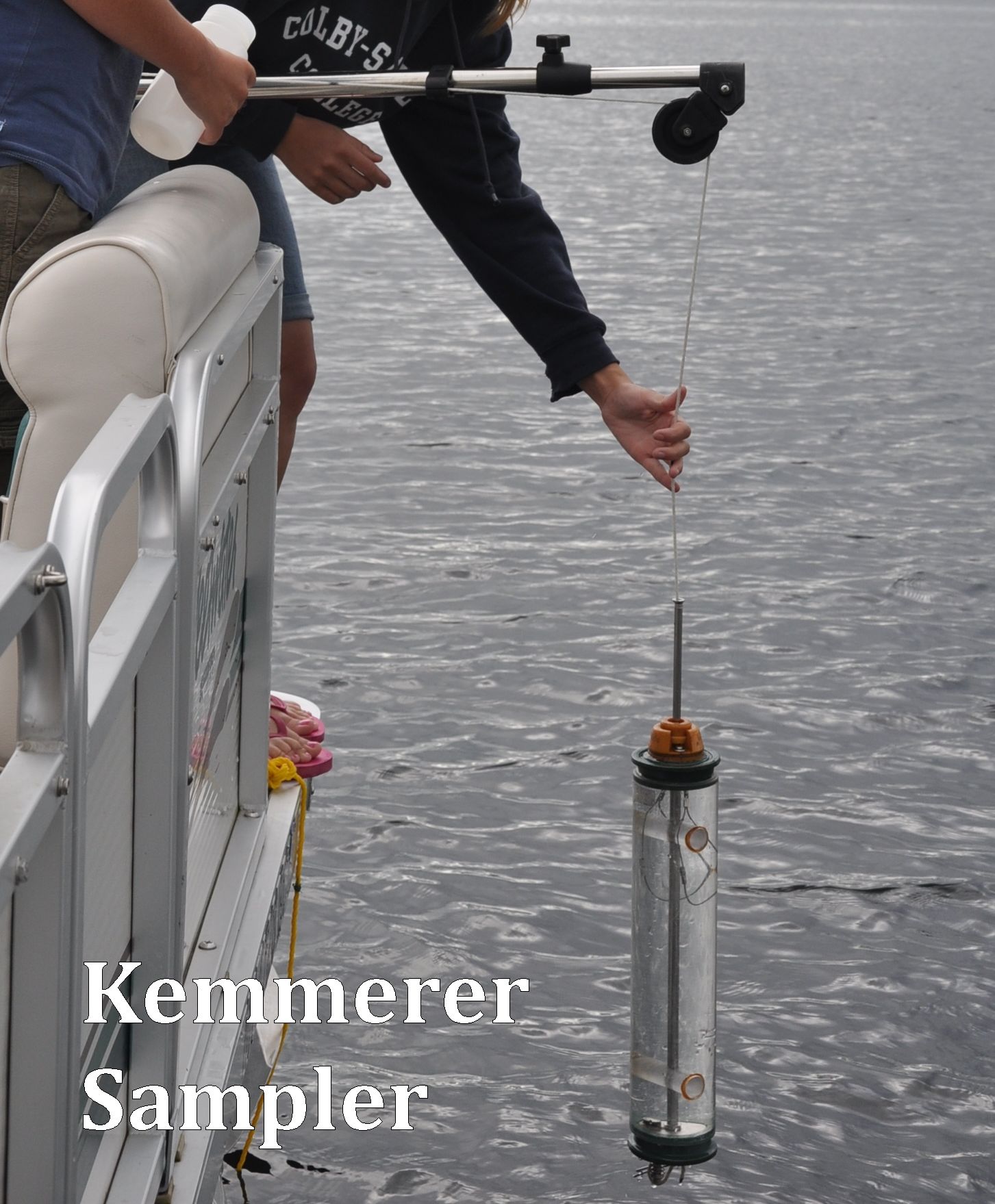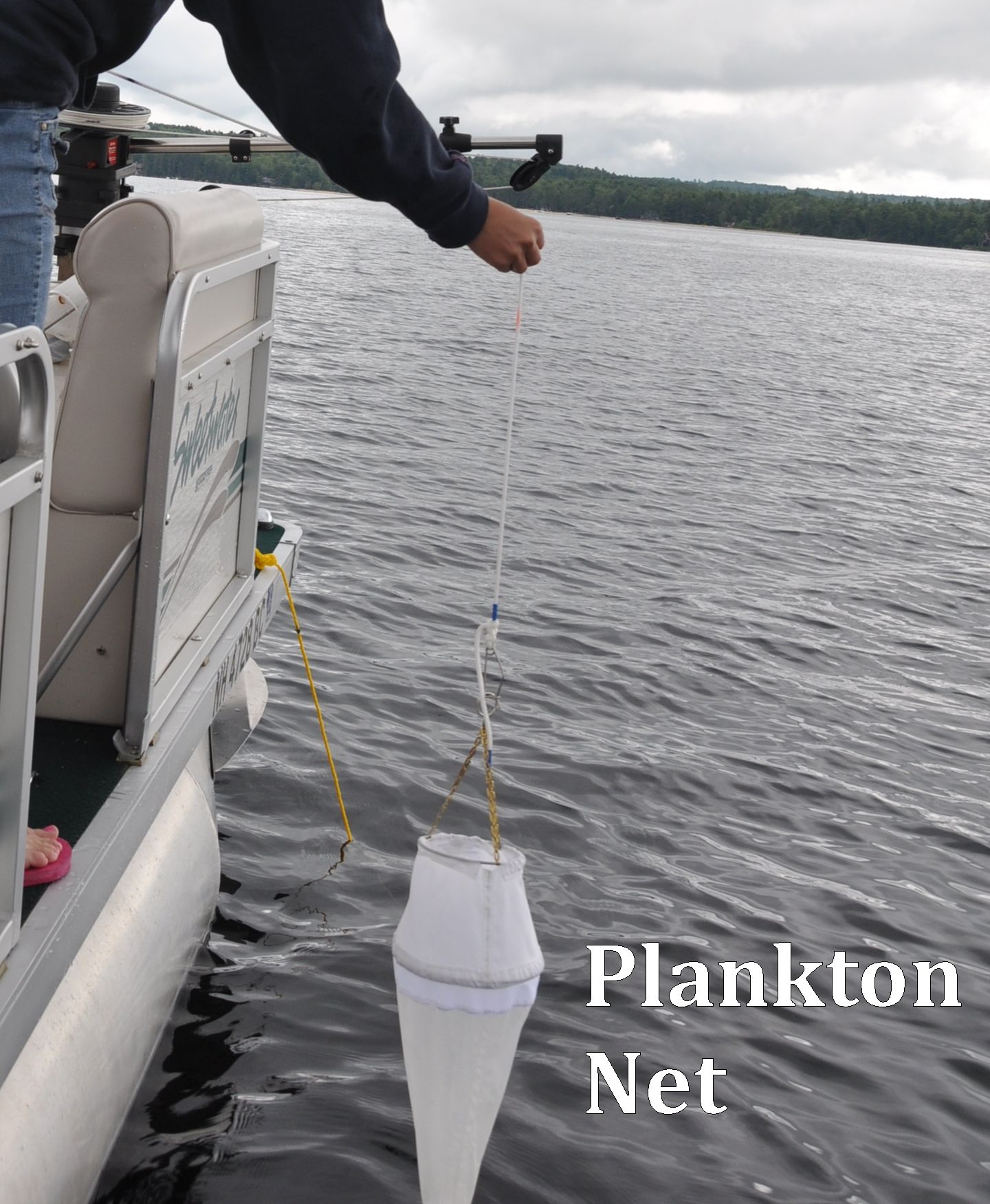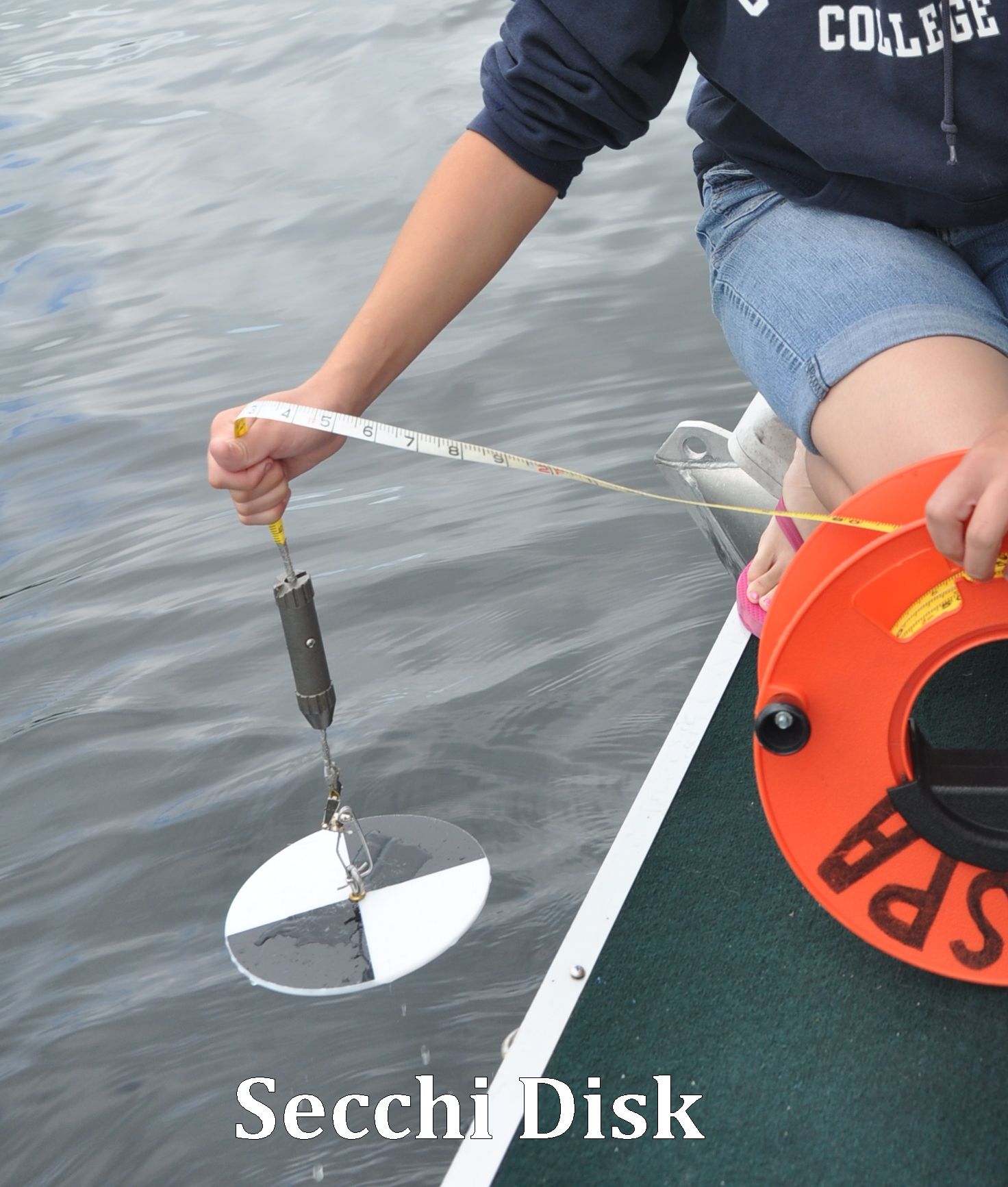Surface Water Quality Sampling
Water Quality Sampling Equipment
LPSA staff and volunteers collect water samples and data by taking surface grabs (or dips) and by using five kinds of sampling equipment. Learn how and why LSPA takes water samples at four deep basin sites in Lake Sunapee.
Kemmerer Water Sampler - used for collecting a water sample at a specified depth
Secchi Disk - used to measure the clarity of the water column
Integrated Hose Sampler - used to sample algal content of the water column
Water Quality Sonde - A multiparameter instrument used to record in-lake water quality profiles. LSPA’s hand-held sonde records depth, temperature, dissolved oxygen, specific conductance, turbidity, chlorophyll-a and phycocyanin (used to detect presence of cyanobacteria).
Plankton Net - used to collect microscopic plankton
A plankton net has a large enough mesh to let water molecules pass through, but small enough to trap plankton. It can be dropped down vertically in the water column and slowly pulled to the surface, trapping the organisms inside and letting the water flow out. Or it can be pulled along the surface of the water for a certain distance, still allowing the water to flow out and the organisms to be kept inside. This concentrates the organisms so that scientists can identify the plankton and determine the relative number of species that are in the water body.
Analyzed at the LSPA Lab
After samples are collected in the field, they are delivered to the lab for analysis. The analyzed parameters, described below, are recorded and compared over time to determine the health of our lakes and streams and to highlight any long term trends. Click here to learn more about trends and concerns in the Lake Sunapee Watershed.
Water Quality Parameters
pH - acidity (concentration of hydrogen ions). pH is measured on a 0 - 14 scale, with 7 being neutral. Lake Sunapee waters average about 6.7, which is slightly acidic. Tributary waters range from about 5.5 up to 7.5.
Specific Conductivity or Specific Conductance - a measure of the dissolved ions in the water, including metals and salts such as calcium and chlorides. These ions give water some level of electrical conductivity. Local waters have low natural conductivity but decades of road salt use has greatly increased these levels. This parameter is measured in micro-Siemens (µS). The conductivity in Lake Sunapee ranges from 85-100 µS and varies in tributary waters.
Dissolved Oxygen - the oxygen in the water that is needed for aquatic life. Colder water can hold more dissolved oxygen than warm water. Low oxygen levels threaten fish and other aquatic animals so most larger fish will be found in deep cold waters in the summer time. Plant and animal decay uses up oxygen, so shallow, warmer waters with an abundance of plant and other life tend to have low oxygen levels. It is measured as milligrams per liter (mg/L). The dissolved oxygen ranges from 8 - 11 mg/L in the top few meters of Lake Sunapee (this is measured in the field).
Chlorophyll-a is a pigment in all plants including algae (phytoplankton), and is used as a measure of the overall algal content in the water, recorded in micrograms per liter (µg/L). The chlorophyll measurement in Lake Sunapee ranges between 1 - 4 µg/L.
Total Phosphorus (TP)- a measure of all forms of phosphorus that are present. Phosphorus is the most important nutrient for productivity in surface waters because it is usually in shortest supply relative to nitrogen and carbon. Many water bodies in the Sunapee watershed still have relatively low phosphorus levels despite nutrient increases from lawns, stormwater runoff, septic and other sources. Sunapee's phosphorus levels have increased slowly but steadily for the last 30 years but the Lake is still considered to be oligotrophic - which means it has relatively low biological productivity. In Lake Sunapee's case, this lower productivity is its natural state. Total phosphorus is measured in milligrams per liter (mg/L) or micrograms per liter (µg/L). The TP in Lake Sunapee averages around 6 µg/L and varies in tributary waters.
Turbidity - a measure of the suspended particulate matter in the water. This can include fine sediments, such as clay, silt, fine sand and organic particulates as well as micro-organisms. It is measured in Nephelometric Turbidity Units (NTUs). The turbidity is usually very low in Lake Sunapee and varies widely in tributary waters.
Alkalinity (ANC- Acid neutralizing capacity) - a measure of the ability to neutralize acid inputs. Lower levels can result in increasing acidity in the lake.
Apparent Color - a measure of the color of water, associated with the amount of tannins present. More intense and frequent storm events, increases in water and atmospheric temperatures and their effects on thermal stratification all contribute to the browning of lake water.
Chloride - a measure of the amount of chloride ions in the water. Typically, the chloride in NH surface waters comes from road salts (sodium chloride). At high levels, chloride can be toxic to aquatic organisms and excess salt can prevent mixing thereby reducing oxygenation of bottom waters.
E. coli - a coliform bacteria found in the digestive systems of warm-blooded animals. Some strains are pathogenic (disease causing). The presence of E. coli is always possible in surface waters. Samples are cultured in the lab and "colonies" are counted.
Transparency (Secchi Disc) - water clarity is measured in the field at the in-lake sites using a black and white metal disc. Visibility of the disc is measured to hundredths of a meter from the water surface. The visibility in Lake Sunapee falls between 7 and 9 meters. Transparency is affected by growth of algae and cyanobacteria, the presence of organic and inorganic particles in the water column and the color of the water.



